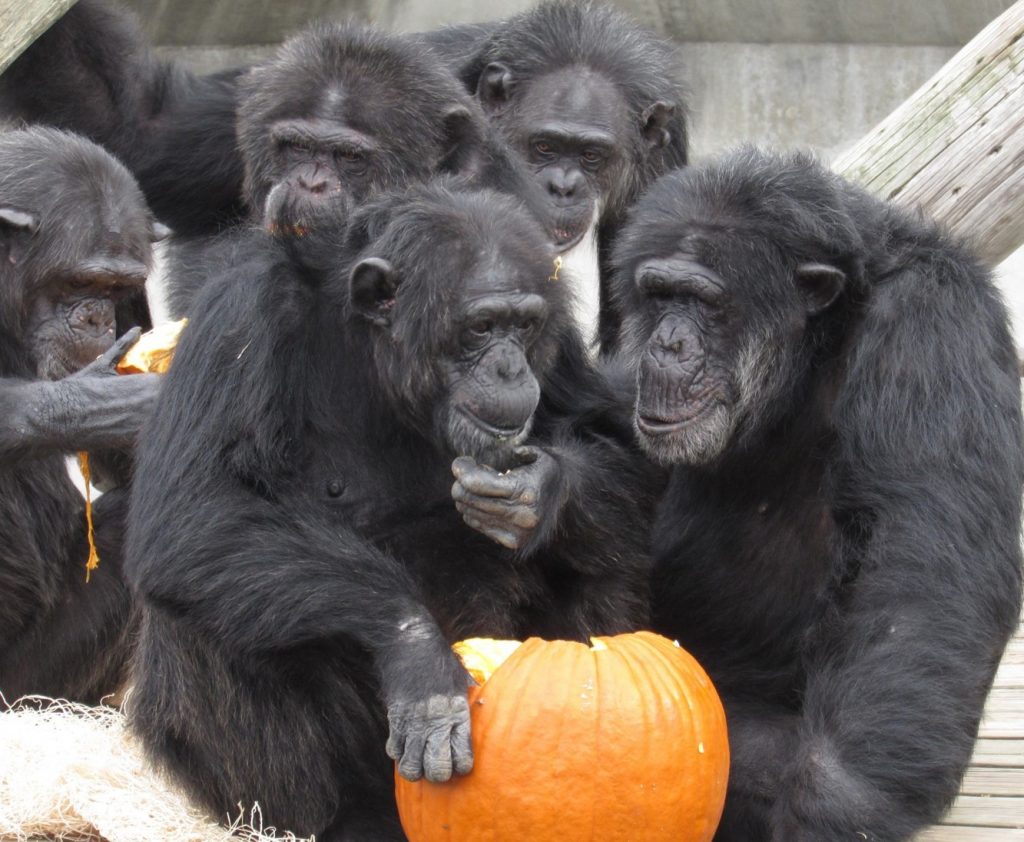
ASP Primate Welfare Award (2018): Chimpanzee group size and composition
For this Winter, 2018 feature on Hot Topics in Welfare, we explore the research of Sarah Neal Webb, a Ph.D. candidate from the University of Copenhagen. Ms. Neal Webb was the recipient of the 2018 American Society of Primatologists’ Primate Welfare Award for her research examining the behavioral effects of group size and composition in captive chimpanzees. In 2013, the National Institutes of Health (NIH) made recommendations for how captive chimpanzee groups should be housed, suggesting they be maintained in age- and sex-diverse groups of at least seven animals per social group. Additionally, the Association of Zoos and Aquariums (AZA) recommends chimpanzees be maintained in age- and sex-diverse groups with at least three males and five females. These recommendations reflect the idea that captive groups should resemble wild chimpanzee societies, where groups are large and engage in fission-fusion behavior during which the composition of the group changes regularly (e.g., fission, or splitting up into smaller groups, during foraging, or fusion, with smaller groups coming together, for sleeping). This study empirically examined several of these existing recommendations and regulations pertaining to captive environments. Neal Webb and colleagues found that chimpanzees in larger groups with more males exhibited higher levels of affiliation, and that chimpanzees in groups with a larger within-group age range exhibited more locomotion. These findings have applications across captive settings, including zoos, sanctuaries, and laboratories, and suggest there are some advantages to housing chimpanzees in larger groups with more males and with larger within-group age ranges.
Watch Sarah Neal Webb present her research on captive chimpanzee group size and composition, complete with video clips of the chimpanzees, or view a PDF version of her poster.
poster: drive.google.com/open
video: www.youtube.com/watch

